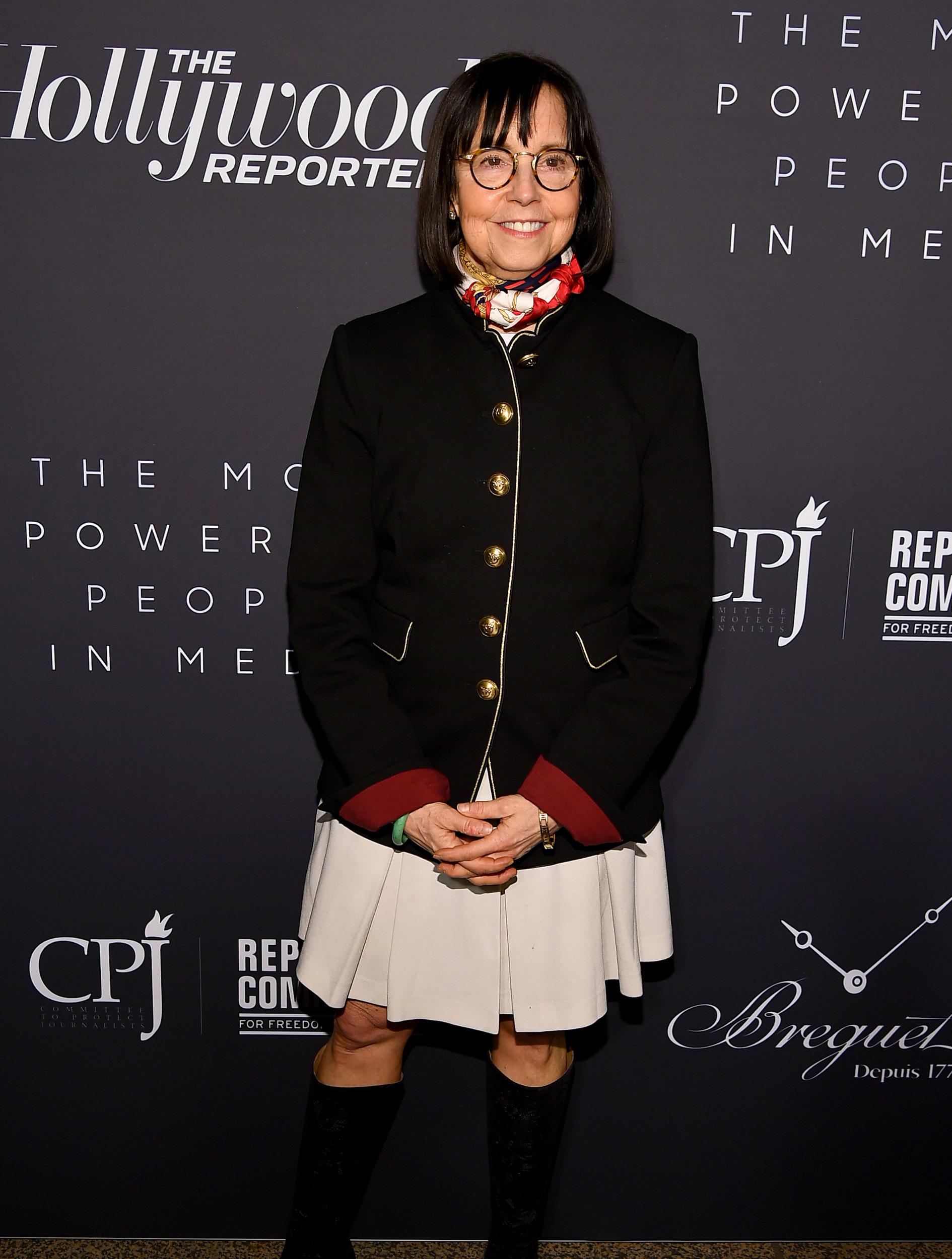Why companies need to employ more women as leaders
Having more women in decision-making roles has been found to generate stronger market returns, superior profits and reduce sexual harassment

Your support helps us to tell the story
From reproductive rights to climate change to Big Tech, The Independent is on the ground when the story is developing. Whether it's investigating the financials of Elon Musk's pro-Trump PAC or producing our latest documentary, 'The A Word', which shines a light on the American women fighting for reproductive rights, we know how important it is to parse out the facts from the messaging.
At such a critical moment in US history, we need reporters on the ground. Your donation allows us to keep sending journalists to speak to both sides of the story.
The Independent is trusted by Americans across the entire political spectrum. And unlike many other quality news outlets, we choose not to lock Americans out of our reporting and analysis with paywalls. We believe quality journalism should be available to everyone, paid for by those who can afford it.
Your support makes all the difference.“You’re too accessible.” That is what Susan Zirinsky, the new head of CBS News, was told early in her career – because she was seemingly everywhere at once. It was during that era that she agreed to meet a young woman named Hannah Yang, who was on the verge of quitting what she had thought would be her dream job – working for talk show host Charlie Rose. She was troubled by the workplace environment and had decided to leave, but was convinced her career in journalism would be over.
Yang had only briefly met Zirinsky, then executive producer at 48 Hours, but decided to ask for a meeting. She expected Zirinsky to say no. Instead, Zirinsky ended up giving her the most valuable advice of her career: to pursue the business side of media.
Eighteen years later, Zirinsky – known to many as “Z” – is president of CBS News, brought in to run the news division following a massive company crisis over sexual misconduct that included the firing of the company’s chief executive, Les Moonves, and Rose. She is the first woman to hold that job. Yang is a business executive at The New York Times, who says she now makes a point of making herself accessible, too.
“It is because she was so accessible that I – a nobody at the time, really – was able to get this critical advice from her,” Yang says of Zirinsky, who appeared onstage to talk about gender and leadership at The Times’ New Rules Summit last month. Yang recently reached out to Zirinsky after nearly two decades to thank her. She says Zirinsky replied immediately.
For a long time, women were taught to “act like men” to get ahead at work. They donned shoulder pads and boxy suits, played by the rules, and acted out qualities that seemed to make for successful leaders – authority, decisiveness, not being “too accessible”.

But a new breed of women leaders like Zirinsky is upending those old rules, embracing traits like empathy and collaboration to get things done, and refusing to suppress the qualities that make them who they are. (Some may call these “feminine” qualities, but others prefer to call them the traits of well-rounded leaders.)
Think Jacinda Ardern, prime minister of New Zealand (and one of the few world leaders to give birth while in office), who spoke onstage at the first New Rules Summit last year. Ardern drew international praise for her ability to mix compassion with concrete action in the wake of a recent mass shooting in her country, in which dozens of worshippers at two mosques were killed. In the hours after, Ardern, the youngest female leader in the world at 38, wore a black headscarf and grieved alongside victims’ families. “We are one, they are us,” she said of her country’s Muslims.
She also took swift action, banning military-style semi-automatic weapons within days of the shooting. “It takes strength to be an empathetic leader,” she said.

But that can also be a tricky line to walk for women. Research has found that when women exhibit character traits typically associated with male leadership – traits like decisiveness, authority or assertion – they are likely to be viewed as bossy, pushy or too aggressive, and some people reel at their behaviour.
And yet when women turn around and exhibit the qualities traditionally expected of women – like niceness, nurturing and warmth – they tend to be perceived as pushovers, too soft or not “tough enough” to do the job. It is a double bind, as sociologists have put it – a situation where you are “damned if you do, damned if you don’t”, as Joan C Williams, a law professor and workplace scholar, has said.
And yet there is also a body of work, including research by a Harvard Business School professor, Amy Cuddy, and colleagues, which found that women can offset that bias by combining these characteristics – essentially, conveying warmth along with competence.
You might believe that women shouldn’t have to do that. (Is anyone else exhausted just thinking about it?) But it’s what Williams has described as “gender judo” – or combining stereotypically “feminine” behaviours, like friendliness, humour and empathy, with those behaviours still associated with men, like aggression or ambition. Many of the world’s leaders have mastered this art: they may be tough, but they are known for their grace and humour, too.
And the good news is, there are simply more styles of leadership on display these days. Of more than 200 men fired in the wake of #MeToo, according to an analysis by The Times last year, nearly half were replaced by women – including Jennifer Salke at Amazon Studios, Christiane Amanpour at PBS and Zirinsky at CBS.
Today, for the first time, women hold the top jobs at the New York Stock Exchange and at Nasdaq. There is a female speaker of the US House of Representatives who is a mother of five and grandmother of nine. There are a record number of women in the US congress, including young rule breakers like Alexandria Ocasio-Cortez, who are leading with a level of camaraderie and transparency perhaps never before seen. And, of course, more women than ever are running for the Democratic nomination for president.

None of which is to say that women are innately better leaders. “That’s not necessarily the case,” says Marianne Cooper, a sociologist at Stanford University who studies gender and leadership. But there are certain things that women learn from a lifetime of operating in male-dominated spaces – things like patience, compassion and calm – that may be assets.
Think of the CBS anchor Gayle King, sitting calmly in her chair, as her interview subject, R. Kelly, who is charged with multiple counts of sexual assault, screamed, flailed and cried.
“Women’s experiences at work are undeniably different,” Cooper, the sociologist, says. “As a result, they may develop a lens on the world that can lead to different thoughts about leadership, different priorities, different ways of interacting. I think certainly all these women in power can open up definitions of who’s a leader.”

There’s a theory in social science, coined by Michelle K Ryan and S Alexander Haslam as the “glass cliff”, that explains how women are more likely to be put into leadership roles during times of crisis. This can end up well if they are successful, but be damaging if they are not – because the failure tends to be viewed not as indicative of the circumstances, but as indicative of the person’s race or gender. (Think of prominent female chief executives like Campbell’s Denise Morrison, or Irene Rosenfeld of Mondelez. Each faced tough restructuring and challenges from investors – and were replaced by men.)
The way to break that cycle, researchers say, is to have more women in power – so that one woman’s experience does not represent that of all women. (Having more women in decision-making roles has also been found to generate stronger market returns and superior profits for companies. And having more women employees, particularly in leadership roles, can reduce the incidence of sexual harassment, too.)
“When there are so few women, any single one’s success or failure represents all other women,” Cooper says. “But once there’s, you know, 30 or 40 per cent women, then the variety among women is able to be seen.”
If you’re Zirinsky, perhaps you take that as a challenge. As she said onstage at the New Rules Summit: “I’ve always had something in the back of my mind: that a crisis is a terrible thing to waste.” (She noted that she also decided to keep the title of executive producer “just in case it doesn’t work out”.)
She could well end up nurturing a few more future leaders in the process.
© New York Times
Join our commenting forum
Join thought-provoking conversations, follow other Independent readers and see their replies
0Comments